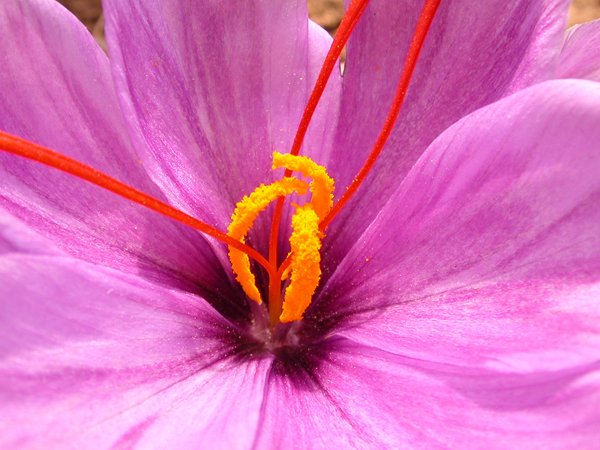Eusano produces innovative botanical extracts based on extensive screening and cultivar selection programs. Commercial herbal raw material mostly consists of mixtures of various origins. Correspondingly, such material would represent a rather low average regarding phytochemical composition. Through the trade channels the advantages and strengths of plant types with especially interesting properties are lost - some of them might contain certain wanted active constituents in high quantities, some of them might lack certain unwanted properties.
Saffron
 Crocus sativus is a very ancient medicinal plant, and since several Centuries has become a high quality spice plant.
Crocus sativus is a very ancient medicinal plant, and since several Centuries has become a high quality spice plant.
It is the source of saffron, which consists of the dried red stigmas of Crocus sativus. The use of saffron against various physiologic states and ailments has been thorougly documented by all ancient Mediterranean, Persian and Arabian cultures throughout several millennia. The interest has never stopped: Even today much research is dedicated to saffron, using modern analytical, pharmacological and clinical methods to confirm the traditional uses of saffron.
Other examples from our field work
 Through screening, selection and cultivation we dispose of a type of German chamomile (Chamomilla recutita) regularly reaching contents of chamazulene of 16%. Usual contents in standard commercial material are 3-4%.
Through screening, selection and cultivation we dispose of a type of German chamomile (Chamomilla recutita) regularly reaching contents of chamazulene of 16%. Usual contents in standard commercial material are 3-4%.
In Namibia, we identified a wild type of Devil's claw (Harpagophytum procumbens) with regular contents of harpagoside > 2,5%, with a good yield of biomass. We were able to demonstrate the feasibility of propagation through cultivation, and have installed a collection of various cultivars in a "gene bank".
We are able to supply kava roots (Piper methysticum) not containing so-called "Tudei"-kava - a type not used in the South Pacific due to adverse effects, but cultivated and used by a German company at the time of the first occurrence of suspected adverse events on the liver.
For the search of optimal cultivars we perform screenings in wild populations. We also test the reproducibility of our findings and the dependence of climatic, ecological or genetic factors.


